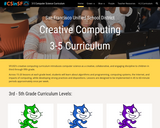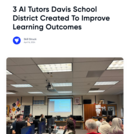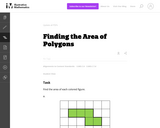
Thanksgiving Point lesson plan about animal environments
- Subject:
- Science
- Material Type:
- Lesson Plan
- Provider:
- Thanksgiving Point
- Date Added:
- 02/24/2023

Thanksgiving Point lesson plan about animal environments

This is a third-grade student science experience tied to SEEd standard 3.2.5. In this experience students create an argument for why certain plants and animals live in certain habitats.
These experiences were designed to support students in engaging in science investigations with siblings and/or parents at home and then report back about what was discovered. They were created in a way that is easily adaptable for both online and printed formats. They are formatted to help students wonder about and investigate the science phenomena happening in the world around them. These experiences do not describe how students should write up and return work to their teacher. It is up to each teacher to adapt them to best meet student needs. When individualized by the teacher, a student could be asked to engage in one or more of these experiences a week and report back. This format aligns closely to the vision and expectation of the SEEd standards.

Google folder with Googles Slides and accompanying studnent journal files. Contains 5 episodes.

Plan and carry out investigations that provide evidence of the effects of balanced and unbalanced forces on the motion of an object. Emphasize investigations where only one variable is tested at a time. Examples could include an unbalanced force on one side of a ball causing it to move and balanced forces pushing on a box from both sides producing no movement.

Analyze and interpret data from observations and measurements of an object’s motion to identify patterns in its motion that can be used to predict future motion. Examples of motion with a predictable pattern could include a child swinging on a swing or a ball rolling down a ramp.

Google folder with Googles Slides and accompanying studnent journal files

Construct an explanation that the gravitational force exerted by Earth causes objects to be directed downward, toward the center of the spherical Earth. Emphasize that "downward" is a local description depending on one’s position on Earth.

Ask questions to plan and carry out an investigation to determine cause and effect relationships of electric or magnetic interactions between two objects not in contact with each other. Emphasize how static electricity and magnets can cause objects to move without touching. Examples could include the force an electrically charged balloon has on hair, how magnet orientation affects the direction of a force, or how the distance between objects affects the strength of a force. Electrical charges and magnetic fields will be taught in Grades 6 through 8.

SFUSD's creative computing curriculum introduces computer science as a creative, collaborative, and engaging discipline to children in third through fifth grade.
Across 15-20 lessons at each grade level, students will learn about algorithms and programming, computing systems, the Internet, and impacts of computing, while developing strong practices and dispositions. Lessons are designed to be implemented in 45 to 60-minute periods approximately once per week.

Starting the Winter Semester in 2024, Davis School District started piloting Chat for Schools, Skill Struck’s newest product that allows students to access AI tutors in a safe, controlled environment.

Learn about how pottery while throwing some digital clay.

Wakelet collection on 3D printing resources

Please note that this is an assessment tool and not a unit lesson plan. Performance expectation 5-LS2-1 is in two parts. As we were developing our formative assessment and summative task, we thought about teaching the learning performance sequentially and decided these spots would be a good place to check in for student understanding. Our thinking of a model is a representation and explanation of a phenomenon. You may want to choose the format your students create (flow chart, drawing, plus/delta, etc.) There are several templates in the formative and summative assessments that may help you and your class.

3rd Grade science unit about patterns in motion. This is a folder that includes a presentation on teaching 3D science and a lesson plan for 3.3.2.

This is a task from the Illustrative Mathematics website that is one part of a complete illustration of the standard to which it is aligned. Each task has at least one solution and some commentary that addresses important asects of the task and its potential use. Here are the first few lines of the commentary for this task: A small square is a square unit. What is the area of this rectangle? Explain. What fraction of the area of each rectangle is shaded blue? Name the frac...

This is a task from the Illustrative Mathematics website that is one part of a complete illustration of the standard to which it is aligned. Each task has at least one solution and some commentary that addresses important asects of the task and its potential use. Here are the first few lines of the commentary for this task: Find the area of each colored figure. Each grid square is 1 inch long....

This is a task from the Illustrative Mathematics website that is one part of a complete illustration of the standard to which it is aligned. Each task has at least one solution and some commentary that addresses important aspects of the task and its potential use.

This is a task from the Illustrative Mathematics website that is one part of a complete illustration of the standard to which it is aligned. Each task has at least one solution and some commentary that addresses important aspects of the task and its potential use.

This is a task from the Illustrative Mathematics website that is one part of a complete illustration of the standard to which it is aligned. Each task has at least one solution and some commentary that addresses important aspects of the task and its potential use.

This is a task from the Illustrative Mathematics website that is one part of a complete illustration of the standard to which it is aligned. Each task has at least one solution and some commentary that addresses important asects of the task and its potential use. Here are the first few lines of the commentary for this task: Draw a purple pentagon Draw a blue shape with 3 line segments that is not a triangle. Draw an orange shape with 4 line segments that is not a quadrilat...